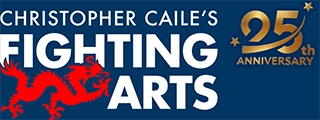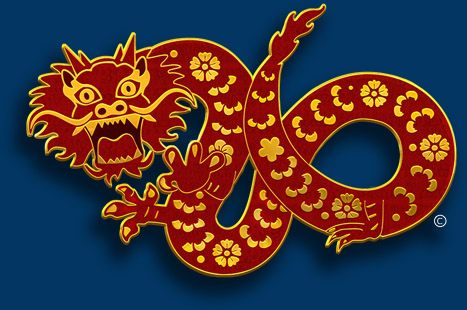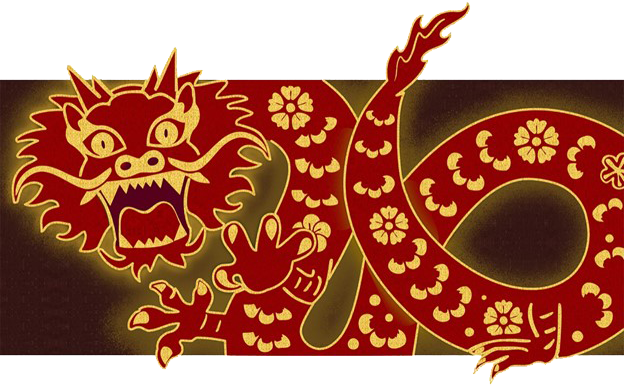The Business Side of Martial Arts
Spotless Marketing
By Christopher Caile
A while back some friends and I went into a neighborhood restaurant for the first time. Inside, first looks were not impressive. The place seemed a bit dingy, old and deteriorating. Strike one. As I slid into a booth I noticed that the booth’s high cloth seatbacks were faded and stained and the plastic seat cushion on my side was cracked. Strike two. Strike three was the menu I was handed. It was encased in cracked plastic and was smudged. In addition the utensils didn’t look clean.
We walked out. The food may have been great, but our initial impressions didn’t allow us to stay to find out. Too many martial arts schools fail the same test.
Picture yourself as a prospective student who visits a martial arts school. How do you react if you see that floors or rugs are dirty, or if there is junk lying around, such as an unorderly pile of fighting equipment, shields and mats? How do you react to changing or locker rooms that have peeling paint, dirt lodged in corners, unclean floors, or if there is a pervading acidy locker room smell? Would you want to use or let your children use dirty toilet or shower facilities that remind you of an unclean gas station facility?
In short, if you want to attract new students your facility should be SPOTLESS.
Spotless facilities show you are organized, attentive to detail, and that you and your students take pride and show respect for your school. The same is true for your student’s personal appearance and uniforms. If your facilities are clean, uncluttered and well maintained they will be attractive, and inviting. Spotlessness, it should be noted, isn’t everything. There are a lot of considerations in choosing a martial arts school, but if the facility isn’t immaculate, the poor impression given just might be enough to persuade the visitor not to investigate further.
If you go to traditional martial arts schools in Japan, they are immaculate. The floors are shiny, cleaned by students at the end of class. The walls are uncluttered, save for weapons and the spiritual center which may have pictures of the founder, calligraphy or other artifacts – all tactfully presented. This translates into simplicity and a feeling of discipline and spirit, something which almost has a tangible, inviting feel.
If you want your martial arts school to be attractive and inviting, it must first be absolutely clean and neat. It should also feel uncluttered which gives a feeling of purity, even simplicity. This will provide the all important good first impression. Any visitor will feel comfortable. He or she will be given the sense that you are organized and that you pay attention to detail. It shows a sense of pride and respect.
So give your school a checkup. Ask someone you know, but who has never visited your school (new eyes), to take a look around and write down a detailed critique of your facility. Sometimes this is difficult to do yourself since the human mind (yours) just gets used to what it sees every day and thus fails to have a critical eye.
Then create a plan for fixing up any structural or material problems. After this is done, create a schedule of what is to be cleaned, by whom and when.
- Be sure that any training floor that uses mats or stretched canvas is clean, neat (tucked in around the edges) and free of spots. Also be sure that any blood, spill or other contamination gets immediate attention.
- Make sure carpets are clean (if you have them). Vacuum daily and have them cleaned regularly – at least once a month.
- If the training area has a wooden floor, have your students clean it with cloths (have them make a line across the floor and push the length of the floor as a group) at the end of every class.
- Inspect the locker room, toilet and shower facilities (if you have them), after every class or at least daily.
- If you have a visiting area be sure that chairs or benches are neatly arranged, that the area is clean and that there is no clutter is on the floor. If viewers look through a glass window, be sure it is clean and free of smudges and fingerprints.
- If there is an entrance area, visitor lobby or sign in/help desk area be very sure it is clean, that anything there (fliers, sales materials, notices, goods for sales, etc.) are neatly arranged (on countertops, in cases, or hung up).
In short, your whole facility should be clean, free of clutter and well set up. You can pay students, or better yet give scholarships or partial scholarships (bartering against membership fees) to those who will clean locker rooms and toilet facilities and other areas every day.
Also remind students (on a regular basis) that they should take responsibility for their school and its cleanliness and that they on their own should help clean, pick up dropped papers or neaten up when needed, or at least report something that needs attention. Remind them that helping out is part of their training. It shows care for their school and other students and that it also shows pride in the school and self-respect. Tell your students that the impression their school and they themselves give is really a reflection of their training and who they are.
Neatness and cleanliness is really about learning discipline, mental conditioning and development of spirit. This is something you should hope to impart to all your students.
There are also other very practical competitive reasons for making sure your school is immaculate. If you want to attract adults, including business people before work, at lunch time, or in the evening, you have to give them an atmosphere that seems clean and professional, someplace they will feel comfortable changing in and perhaps taking a shower. They demand cleanliness, especially of the locker room.
If you want to attract children and young adults, it is absolutely critical that parents feel comfortable with your facilities. They demand clean facilities and showers as well as spotless toilets – after all they are responsible for the health and well being of the children.
For parents, you probably aren’t the only game in town. There are other choices including other martial arts schools and other community, church, school, university or YMCA programs.
Remember too that your competitors include other recreation and health related program offered by well financed gyms, YMCA’s, health clubs and other athletic facilities which often start with facilities you can only dream of.
Yes, as a martial arts school you can offer something unique – a product that is interesting (health clubs where people exercise and lift weights often get boring very quickly for many), practical (self defense) and can lead to self discipline and mental strength. But success is limited in part to your capacity to compete with the alternatives in terms of the cleanliness and appearance of your facility – BE SPOTLESS.

About the Author Christopher Caile
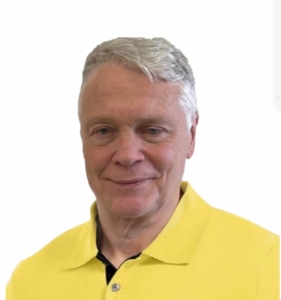
Screenshot
Christopher Caile is the Founder and Editor-In-Chief of FightingArts.com. He has been a student of the martial arts for over 65 years.
He first started in judo while in college. Then he added karate as a student of Phil Koeppel in 1959 studying Kempo and Wado-Ryu karate. He later added Shotokan Karate where he was promoted to brown belt and taught beginner classes. In 1960 while living in Finland, Caile introduced karate to that country and placed fourth in that nation’s first national judo tournament.
Wanting to further his karate studies, Caile then hitch hiked from Finland to Japan traveling through Scandinavia, Europe, North Africa, the Middle East and South and Southeast Asia — living on 25 cents a day and often sleeping outside.
Arriving in Japan (1962), Caile was introduced to Mas Oyama and his fledgling full contact Kyokushinkai Karate by Donn Draeger, the famous martial artist and historian. Donn also housed him with several other senior international judo practitioners. Donn became Caile’s martial arts mentor, coaching him in judo and introducing him to Shinto Muso-ryu under Takaji Shimizu.
Caile studied at Oyama’s honbu dojo and also at Kenji Kurosaki’s second Tokyo Kyokushinkai dojo. In his first day in class Oyama asked Caile to teach English to his chief instructor, Tadashi Nakamura. They have been friends ever since. Caile also participated in Oyama’s masterwork book, “This Is Karate.”
Caile left Japan with his black belt and designation as Branch Chief, the first in the US to have had extensive training in Japan directly under Oyama Sensei. As such, Oyama Sensei asked him to be his representative on visits to his US dojos to report on their status.
A little over a year later, Nakamura, Kusosaki and Akio Fujihira won an epic David vs. Goliath challenge match against Thailand’s professional Muay Thai Boxers in Bangkok, Thailand, thrusting Kyolushinkai and Nakamura into national prominence.
Back in the US Caile taught Kyokushinkai karate in Peoria, Il while in college and later in Washington, DC. while in graduate school. Durimg this time Shihan Nakamura had moved to New York City to head Kyokushinkai’s North American Operation.
In 1976 when Kaicho Tadashi Nakamura formed the World Seido Karate organization, Caile followed. Living then in Buffalo, NY, Caile taught Seido karate and self-defense at the State University of New York at Buffalo (SUNY Buffalo) for over 15 years where he also frequently lectured on martial arts and Zen in courses on Japanese culture.
Caile moved to New York City in 1999 to marry Jackie Veit. He is now an 8th degree black belt, Hanshi, training in Seido Karate’s Westchester, NY Johshin Honzan (Spiritual Center) dojo. In Seido Caile is known for his teaching of and seminars on kata applications. He also produced a 14 segment video series on Pinan kata Bunkai currently available to Seido members.
Caile is also a long-time student and Shihan in Aikido. He studied in Buffalo, under Mike Hawley Shihan, and then under Wadokai Aikido’s founder, the late Roy Suenaka (uchi deshi under Morihei Ueshiba, founder of Aikido and was Shihan under Tohei Sensei). In karate, Suenaka (8thdan) was also an in-house student of the Okinawan karate master Hohan Soken.
Having moved to New York City, Caile in 2000 founded this martial arts educational website, FightingArts.com. Twenty-five years later, in 2025, it underwent a major update and revision.
For FightingArts.com and other publications Caile wrote hundreds of articles on karate, martial arts, Japanese art, Chinese Medicine and edited a book on Zen. He also developed relationships with a cross section of leading martial arts teachers. Over the last four decades he has conducted extensive private research into karate and martial arts including private translations of the once secret Okinawan hand copied and passed on Kung Fu book, the Bubishi, as well as an early karate book by the karate master Kenwa Mabuni. He periodically returns to Japan and Okinawa to continue his studies and participate Seido karate events. In Tokyo he practiced (with Roy Suenaka Sensei) in a variety of aikido organizations with their founders – including private interviews and practices at the Aiki-kai Aikido Honbu dojo with the son and grandson of aikido’s founder, Doshu (headmaster) Kisshomaru (an old uchi-deshi friend) and his son, Moriteru Ueshiba and in Iwama with Morihiro Saito. On Okinawa he studied Goju Ryu karate under Eiichi Miyazato, 10th dan founder of Naha’s Jundokan, and also with Yoshitaka Taira (who later formed his own organization, who specialized in kata Bunkai. While there Caile also trained with Hohan Soken’s senior student, Master Fusei Kise, 10 dan as well as with the grandson of the legendary karate master Anko Itosu.
Caile’s other martial arts experience includes: Diato-ryu Aikijujitsu and Kenjitsu, kobudo, boxing, Muay Thai, MMA, Kali (empty hand, knife and bolo), study of old Okinawan Shoran-ryu & Tomari body mechanics, study of old Okinawan kata under Richard Kim, study of close quarter defense and combat, including knife and gun defenses, Kyusho Jitsu and several Chinese fighting arts including 8 Star Praying Mantis, Pak Mei (White Eyebrow), and a private family system of Kung Fu.
Caile is also a student of Zen as well as a long-term student of one branch of Traditional Chinese Medicine, Chi Kung (Qigong). As one of two senior disciples of Chi Kung master Dr. Shen (M.D., Ph.D.) Caile was certified to teach and practice. This led to Caile’s founding of the The Chi Kung Healing Institute on Grand Island, NY. In Western NY, he also frequently held Chi Kung seminars, including at SUNY Buffalo and at the famous Chautauqua Institution in Chautauqua, NY. His articles on Chi Kung also appeared in the Holistic Health Journal and in several books on alternative medicine.
Caile holds a BA in International Studies from Bradley University and MA in International Relations with a specialty in South and Southeast Asia from American University in Washington, D.C. While in Buffalo, NY he also studied digital and analog electronics.
In his professional life Caile also worked in public relations and as a newspaper reporter and photographer. Earlier he worked in the field of telecommunications including Managing a Buffalo, NY sales and service branch for ITT. He then founded his own private telephone company. This was followed by creation of an electrical engineering company that designed and patented his concept for a new type of low-cost small business telephone system (which was eventually sold to Bell South). The company also did contract work for Kodak and the US space program. Simultaneously Caile designed and manufactured a unique break-apart portable pontoon boat.
Most recently Caile co-founded an internet software company. Its products include software suites with AI capability for control and management of streaming media, such as video and music, an all-in-one book publishing software product for hardcover, eBook and audio book creation and security software for buildings and government use.
For more details about Christopher Caile’s martial arts, work experience and life profile, see the About section in the footer of this site.
Search for more articles by this author:
